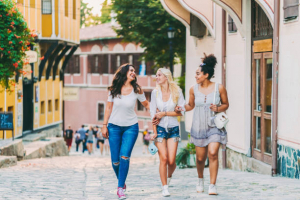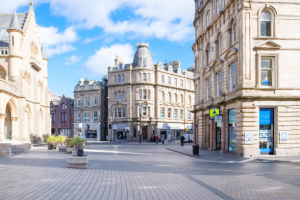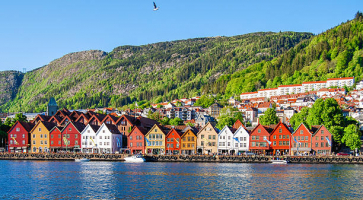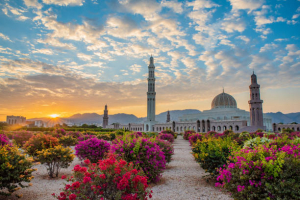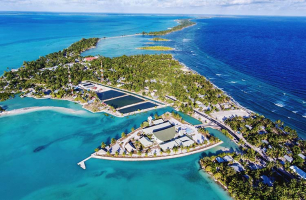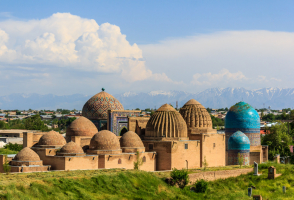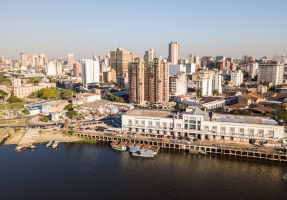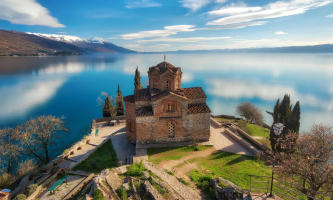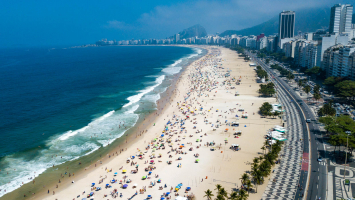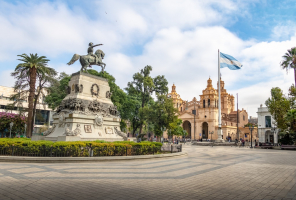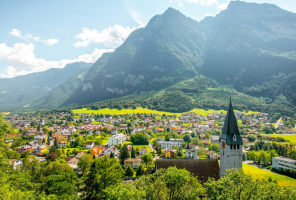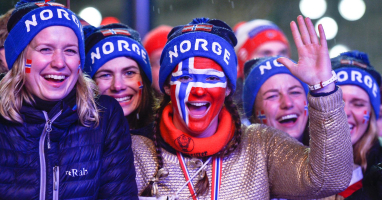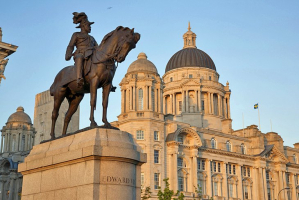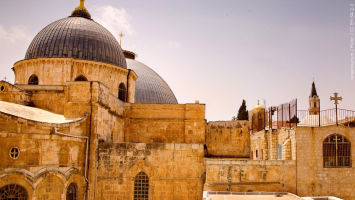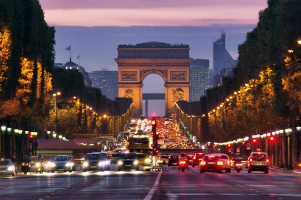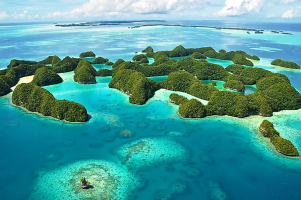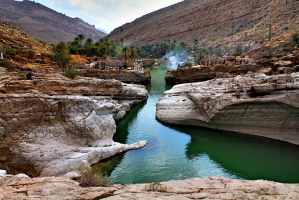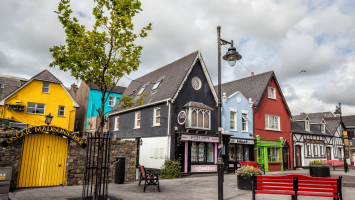Top 10 Reasons to Visit Latvia
While other Eastern European tourism hotspots like the Czech Republic and Hungary have gained popularity recently, Latvia has remained undiscovered by ... read more...tourists. It is a must-see due to its empty, sandy beaches, free-roaming horses, the art city of tomorrow, a bog landscape that is more mesmerizing than it seems, and impressive architectural achievements that provide a fascinating glimpse into the nation's turbulent past. Here are a few of the reasons to visit Latvia.
-
The historical and physical center of the Latvian city - Old Riga - is a well-liked entertainment zone with cobblestone streets and a wealth of architectural treasures. Travelers from all over the world now prioritize visiting Riga while planning their vacations. With its spectacular medieval buildings, enormous churches, and cobblestone streets, the Old Town is the beating heart of the city. The Old Town experiences high tourist traffic throughout the summer due of all of its sunny squares, beer gardens, and outdoor cafes. In the winter, the Old Town is crowded with Christmas markets selling glazed gingerbread, roasted almonds, and wine that has a delicious aroma. This is considered as one of the Reasons to Visit Latvia.
One of the most distinctive features of this Baltic city is its Art Nouveau architecture. Riga just so happened to be in the middle of an unheard-of financial boom at the turn of the 20th century, when Art Nouveau was at the height of its popularity. More than 400 Art Nouveau structures can be found in Riga, and they are all in excellent shape.
Visit the Art Nouveau Museum to see its stunning staircase and a replica of an interior from the time period, or take a stroll down Alberta or Elizabeta streets to see many lovely specimens of this century-old design. Visit the Riga Castle, the Powder Tower, the Three Brothers, the Dannenstern building, which houses an exhibition on how wealthy Riga inhabitants previously lived, as well as a number of other significant architectural and historical structures.
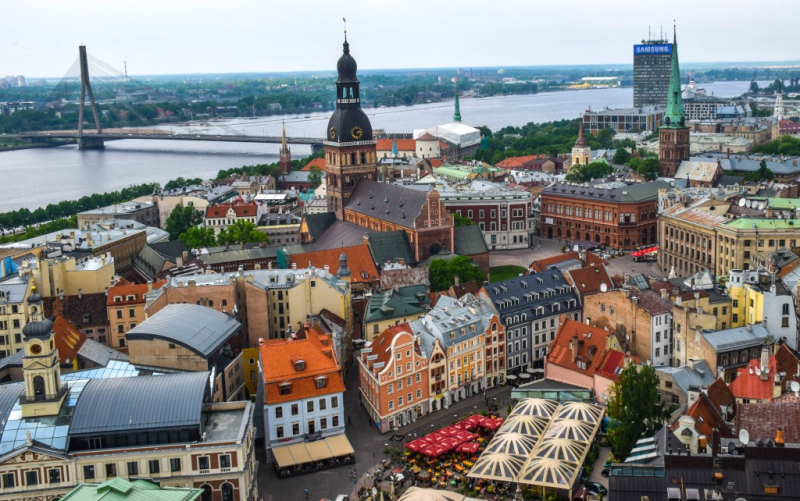
https://rtwin30days.com/ 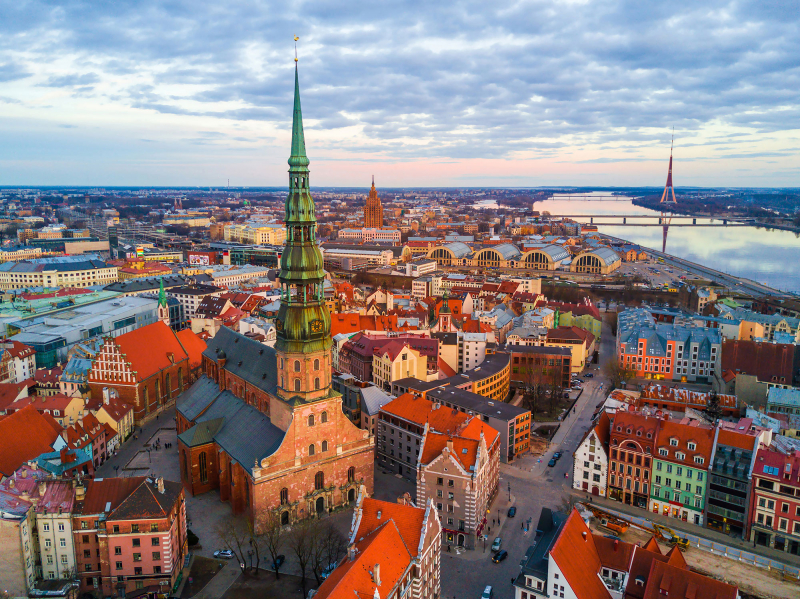
https://www.traveller.ee/ -
Riga is the ideal location for lovers of this theatrical style of architecture and design. Riga, the capital of Latvia, has the largest concentration of Art Nouveau buildings anywhere in the world, with almost one-third of the city's structures being examples of the style. The majority of Riga's Art Nouveau structures were constructed between 1904 and 1914, during a time of strong economic expansion.
Similar to other cities, Riga was inspired by the Art Nouveau movement in order to exhibit a stronger sense of individuality, local pride, and a more rational style of architecture than that which had predominated in the 19th century. Eclectic, Perpendicular, National Romantic, and Neo-Classical are the four further stylistic divisions of Riga's Art Nouveau architecture.
When the art nouveau movement swept over Europe at the start of the 20th century, the city's architects went entirely overboard, and even after the devastation of World War II, over 750 art nouveau structures still stand. While walking the streets, look up to observe the numerous facades that are adorned with the swirling natural themes, bare-breasted goddesses, and legendary creatures typical of the style. Visit the historical residence that houses the Rga Art Nouveau Museum if you wish to learn more. Visit the Museum of Decorative Arts & Design to find furniture and textiles in the art nouveau style.
https://www.cambridgeincolour.com/ 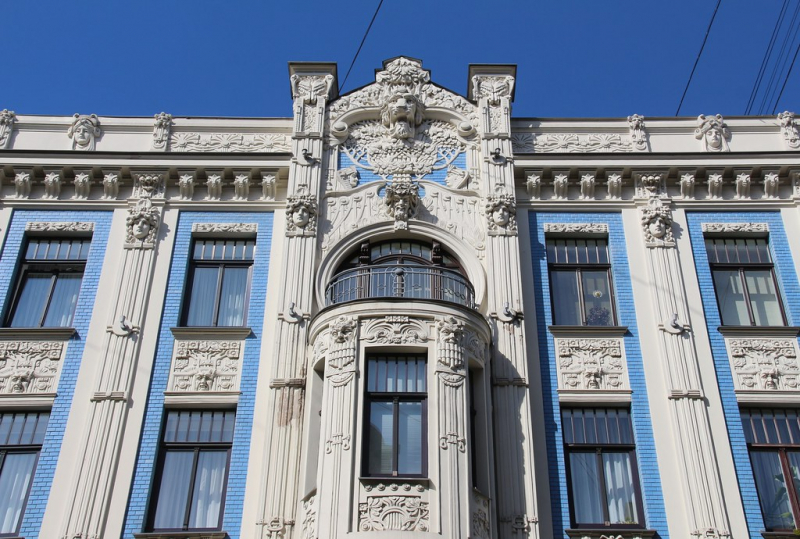
https://www.flickr.com/ -
First-timers to Latvia's Baltic Sea are frequently taken aback by how stunning the beaches are. Even though the weather isn't quite right, the vast golden beaches are a perfect spot to let the youngsters run wild with a bucket and shovel during the height of summer. Jūrmala is around 20 kilometers from Riga, the country's capital. This is the most opulent beach town in Latvia, and it is dotted with magnificent spa hotels and stately wooden vacation homes. Jūrmala, which welcomes many tourists each year, is also referred to as the tourist country's "pearl." The city is home to sizable spas, hotels, and other historic structures. You can travel to this location with your loved ones and have a wonderful time. There is everything you require for touring, resting, and amusement.
The Jurkalne Bluffs, a group of tree-topped cliffs with sandy shoreline that are constantly shifting, are recognized for being relatively untouched by human activity. They are located along Latvia's west coast. Approach through the Pape Nature Reserve to see the park's auroxen and wild horses (a type of cattle). Visit the small coastal town of Pavilosta if you're a surfer looking to catch some waves. There, kites swarm overhead like birds of paradise and fish dinners are served hot from shacks with sandy floors.
Visit the northeastern city of Ventspils for a more tranquil atmosphere. Ventspils is a city with beaches, public art, and a huge selection of kid-friendly activities in addition to its thriving port.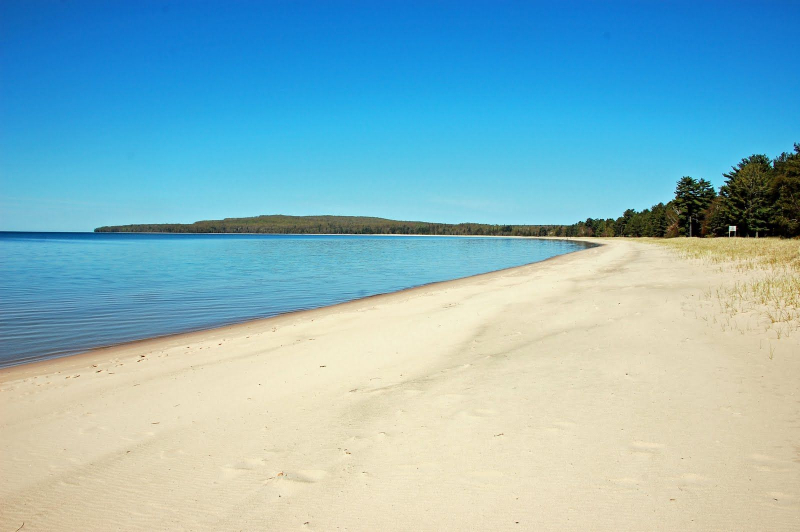
https://www.pinterest.com/ 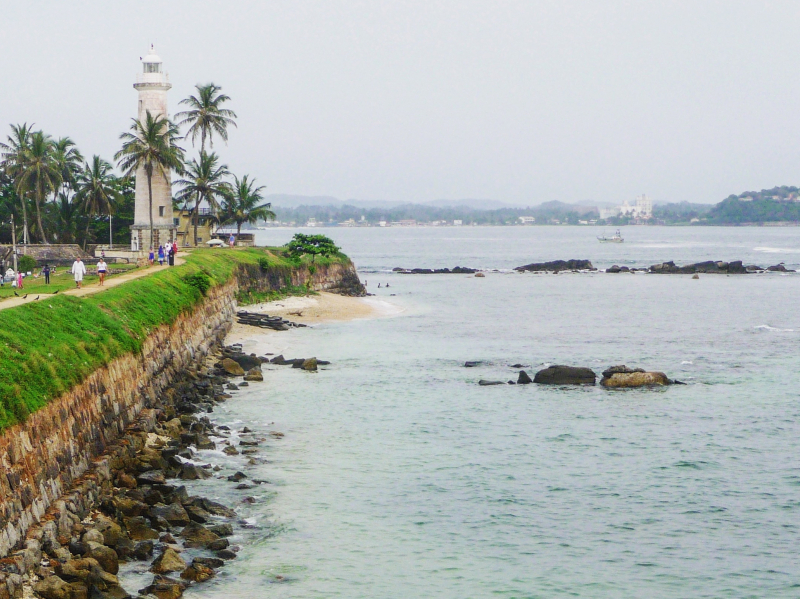
https://emmawri.com/ -
Discovering the food and all of its distinctive specialties, including as kvass, soups, and dark rye bread, can help you better appreciate Latvian culture and traditions. Some of the foods may appear bizarre or unusual at first, but if you're up for a memorable gastronomic adventure in Latvia, you'll want to bring them all back with you.
Skābeņu zupa, sometimes known as green borscht, is a typical sorrel soup from Latvia. Latvians make the soup using beef broth, sorrel leaves that have been chopped, pearl barley, potatoes, onions, and lemon juice. Hard-boiled eggs and sour cream are frequently used as decorations, while some Latvians also include grated carrots and smoked pork ribs. Skābeņu zupa is typically served warm, although on hot summer days, some people prefer it served ice cold. The word "Skābeņu" which relates to the sour flavor of sorrel, is used in the name of this soup.
In karbonade, breadcrumbs are used to fry ground pork. Pork is a staple on Latvian cuisine, making it one of the most well-liked foods there. Typically, karbonade is served with dill-seasoned potatoes on the side and a heap of creamy mushrooms on top.Aukstā zupa is a distinctively deep pink cold soup from Latvia. Beets, cucumbers, dill, kefir, hard-boiled eggs, and milk sausage are used to make it. With a dash of vinegar, the soup is preferred by some Latvians. The soup is prepared by combining all the ingredients, seasoning with salt and pepper, and then serving it chilled. It is suggested that the soup be served with some boiled potatoes or brown bread. Aukstā zupa is difficult to find in restaurants in the winter because it is so popular in the summer.
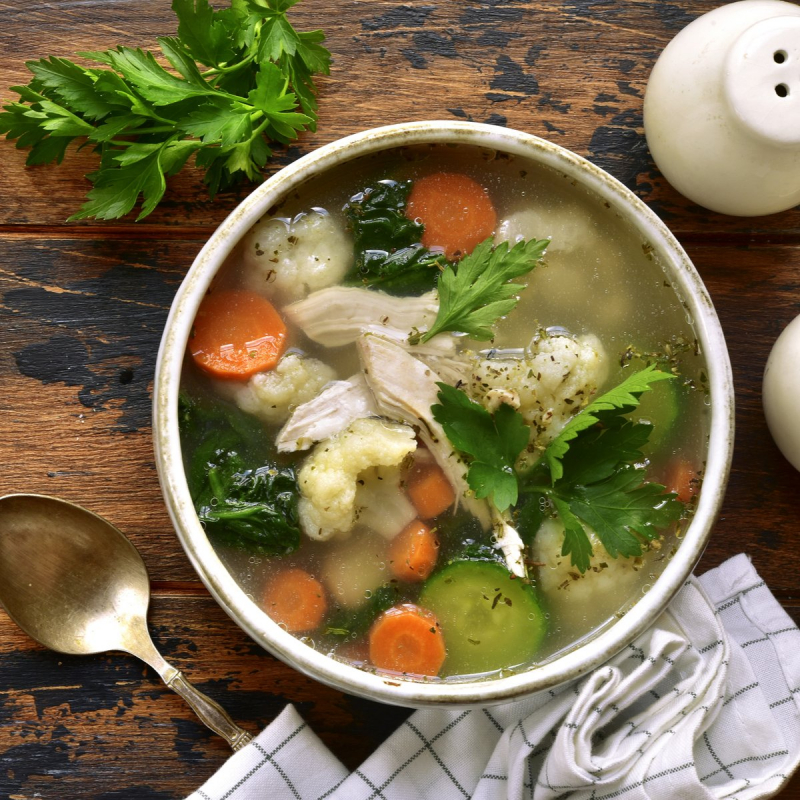
https://twitter.com/ 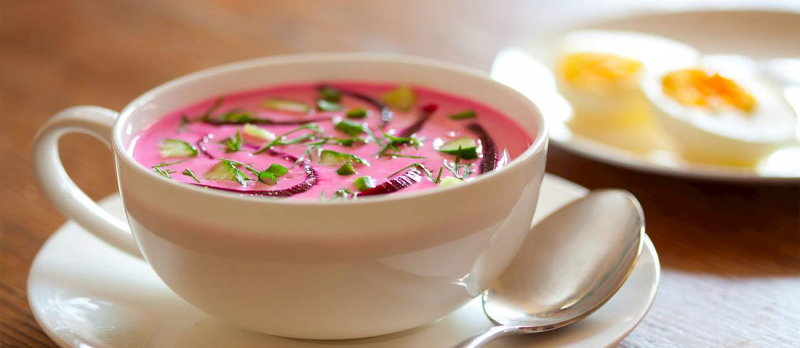
https://www.tasteatlas.com/ -
German military monks couldn't be confident of a warm welcome when they stormed into the Baltics in the early 13th century, teaching the locals about the joys of Christianity with the pointed end of their swords. Strong defenses were an essential precaution, and numerous castles that were built all around the country are still standing today. In Latvia, there are roughly 140 medieval castles. While many splendid palaces belonged to the nobles after the Baltic Crusades, some of them date back to the time of the Baltic Crusade.
One of the two most impressive Baroque castles constructed for the Duke of Courland is Rundale Castle in Latvia. The palace, with its outstanding Baroque and Rococo architecture, is situated in the heart of the picturesque Zemgale Plain in southern Latvia. It was constructed in the late 18th century, and Italian painters and a Berlin-based sculptor embellished the inside.
On the banks of the Gauja River in the huge area sits Turaida Castle, a significant defensive fortification that dates back to 1214. Throughout history, this fortress had a significant part to play. This structure, which is composed of red bricks, is quite well-known for its design. Sadly, a fire in 1776 caused damage to it, but it has just been rebuilt. In the renovated structures, there are exhibits concerning the Gauja Livonians and the history of the brick fortress. You must view the distinctive landscape that it shares!
There are numerous stone castles in Latvia's Gauja Valley. The majority of Latvia's castles are located in this region. One such stronghold, constructed in the 13th century by the Livonian Brothers of the Sword, is Sigulda Castle. The castle was initially constructed to regulate the Gauja Valley's streams. William of Modena, the Pope's legate, transformed it into a monastic residence around the beginning of the 13th century. At Sigulda Castle, a parish was established along with the construction of a church.
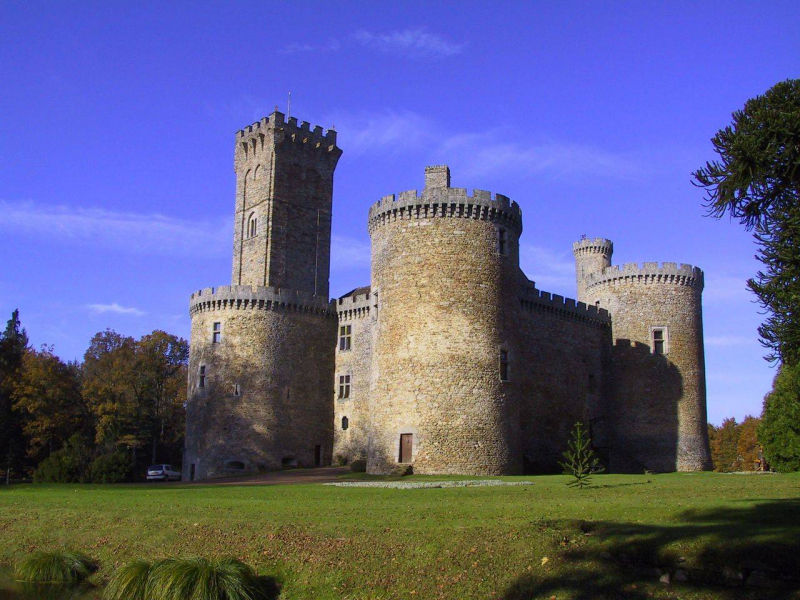
https://immoglobe.ch/ 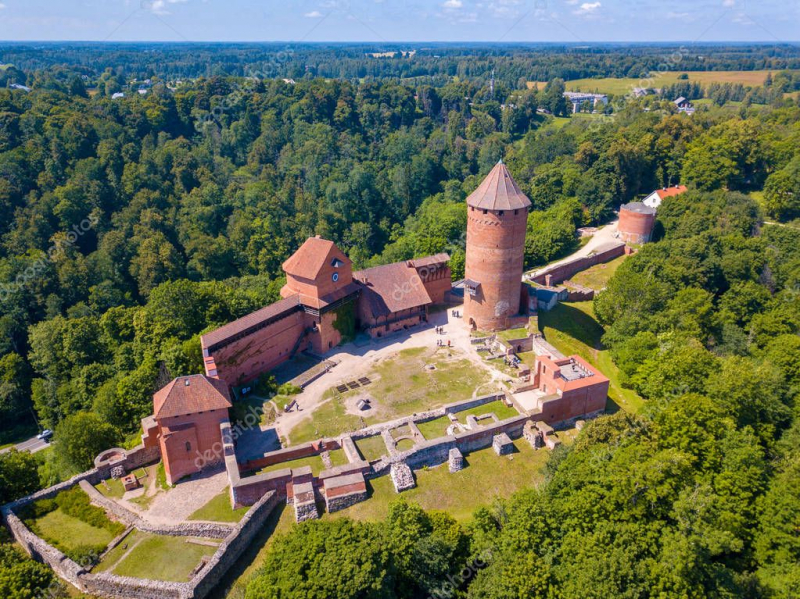
https://depositphotos.com/ -
The amount of forests in Latvia is one feature that many visitors notice and quickly mention. And the Latvian people are delighted to live as close to nature as they can. Walk through the woods if you want to get close to the Latvian soul.
There are trees everywhere you go in Latvia, so the only way to properly appreciate them is to leave the country's capital, Riga, and head in any direction. A substantial number of lynx, beavers, and raptor birds are among the many animals that may be found in the forests, which make up around 45% of the country. The greatest locations to explore tree-lined pathways are in Gauja National Park, northeast of Riga, and Kemeri National Park, a sizable area of woodland and bog close to Jūrmala. Leafy trails go between the remains of three castles and down the Gauja River from Sigulda, the entrance of Gauja.
Additionally, regulations for wild camping are less rigorous than they are, say, in the UK. This implies that anyone can set up camp anywhere in Latvia, including in genuinely stunning and undeveloped areas. Naturally, you will need to exercise greater caution when visiting national parks. It can be seen as one of the Reasons to Visit Latvia.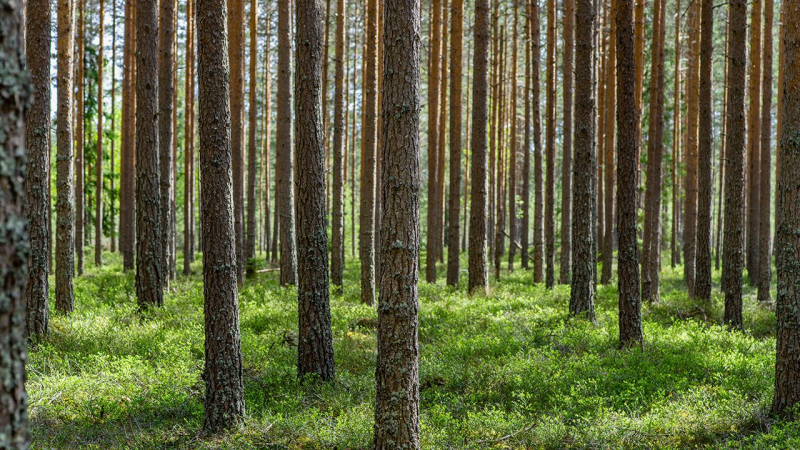
https://www.trinitycville.org/ 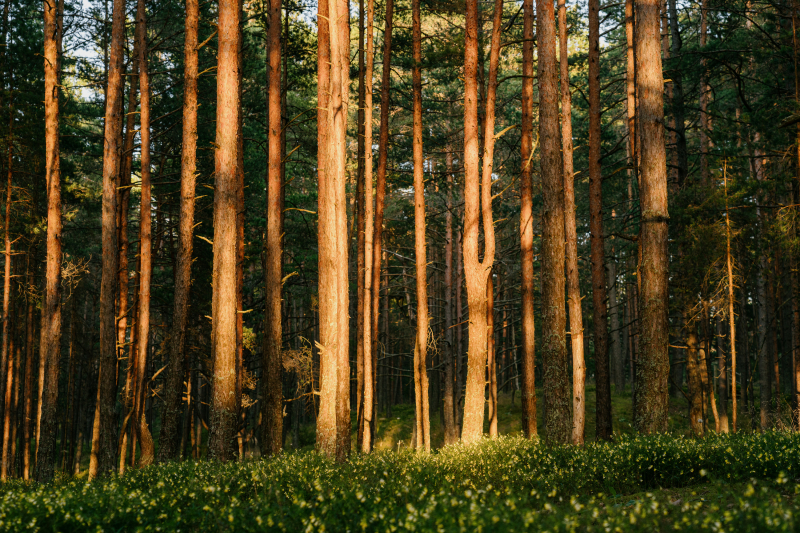
https://barnimages.com/ -
The adoption of the Euro, which became the nation's official currency on 1 January 2014, is a relatively recent development for Latvia. It eliminates the inconvenience of obtaining a fresh currency out and inevitably trying to use it all up before you leave, which is just another reason why traveling to Latvia is simpler than you probably realize.
While it might not be as cheap as, say, the Balkans, Latvia is unquestionably more affordable than Western and Central Europe in terms of costs and budgets. The cost of things like a cup of coffee ($1-2), local public transportation ($1), intercity transportation ($2–$7), and lodging can be rather reasonable. The cost of admission to attractions like cable cars, panoramic views, and castles is probably only slightly less than the norm in Europe. A good supper is easily accessible for less than €15. Essentially, going to Latvia is a fantastic choice if you're on a tight budget.
As visitor traffic increases in the summer, prices rise. The best time to book economical lodging and flights is in the autumn, which will further reduce the cost of your trip.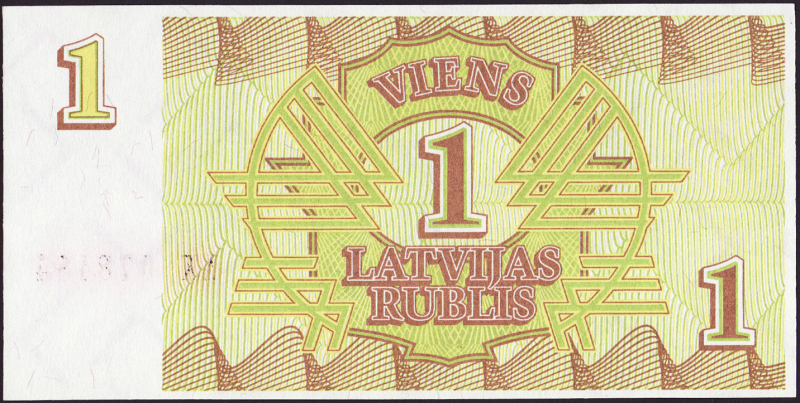
https://moneycurrencypictures.blogspot.com/ 
https://cs.wikipedia.org/ -
Latvia has it all, from extensive forests to lovely sandy beaches, lakes, and rivers. About half of Latvia's land area is made up of a natural ecosystem that is largely undeveloped. Everyone now has a fantastic opportunity to go out of the city and enjoy what nature has to offer. All four seasons can be experienced to the utmost, making it a fantastic tourist destination all year long!
A run of hot, dry days may be experienced during the brief summers, although showers and cool nights are also possible during this time. Along with your T-shirts, don't forget to carry a warm sweater and waterproof jacket. Mid-September onwards sees a sharp drop in temperature, but autumn may still be a stunning time of year to go because of the contrast between the dark-green pines and the deciduous trees' golden-brown foliage.
Mid-November can see the first snowfalls, and by early to mid-December, winter has fully descended. Winter may, of course, be a lovely period, with frozen lakes, rivers, and vast stretches of the Baltic Sea, as well as crunchy snow that gives medieval city centers a magical air. Without a four-wheel-drive car, it can be challenging to access rural places, and you'll need to be well-prepared to endure all but the shortest of walks. In the cold, a hat or other head protection is a must wherever you are.
The countryside can stay drab and grey even after the spring thaw arrives until well into April (or even May in northern Estonia), when a sudden explosion of color changes the appearance of the surroundings. While city dwellers rush in a frenzy to the pavement cafés, the countryside assumes a lush greenness that draws cattle and horses out of their winter barns.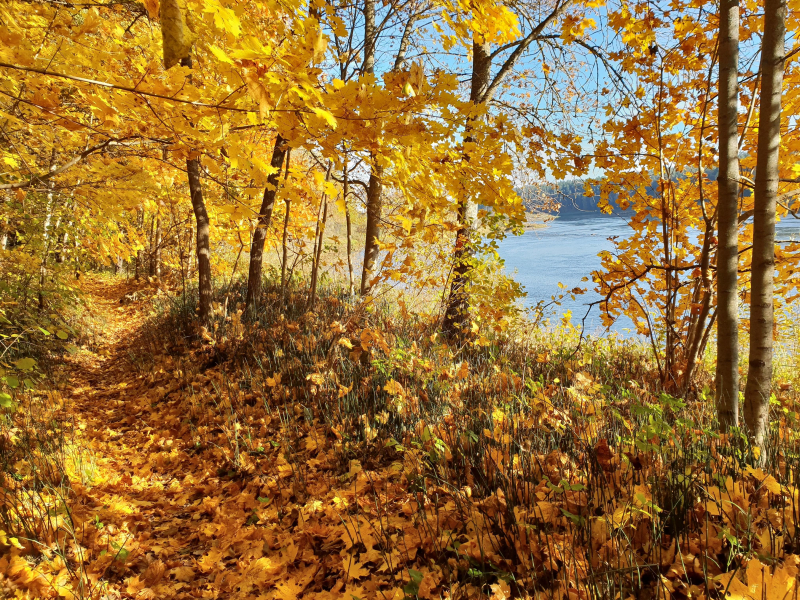
https://www.pinterest.com/ 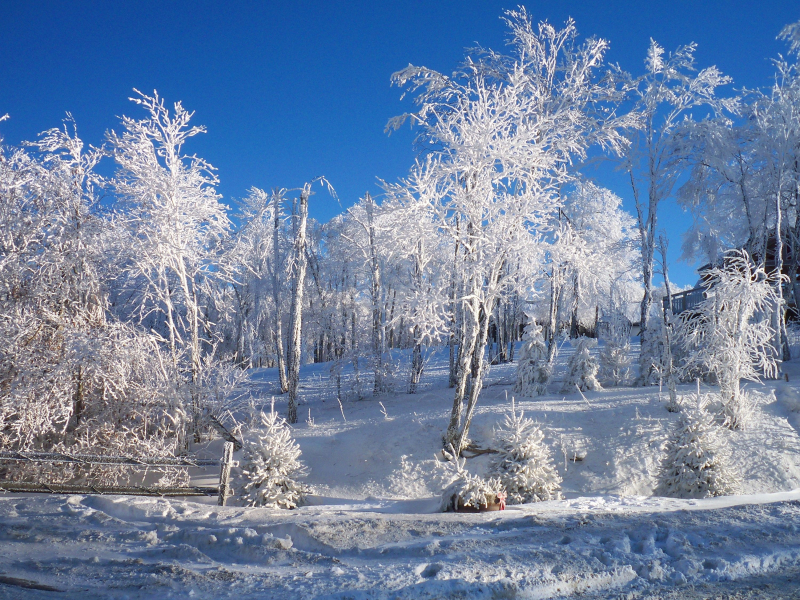
https://www.pinterest.com/ -
Many former Soviet Union nations have a reputation for having stony-faced or even outright nasty citizens. However, despite not being outwardly extroverted, Latvians are very friendly. The majority of Latvians are trilingual. Even in the more isolated places, Russian and English are widely spoken in addition to their original tongues. Ask for help if you need it! Most Latvians are happy to help, and many will go above and above to show off Latvia's kind side. This can be seen as one of the Reasons to Visit Latvia.
Additionally, you can count on Latvians to always act with the utmost professionalism. You should always expect to be addressed in a formal manner, behave like a business customer, and listen calmly and attentively because manners are highly valued in their society.
Last but not least, these kind people respect their nation and the natural world (many people have last names that are the names of trees, animals, or parts of nature). Weekend gateways are a way of life here, and you'd even discover that nature has a way of influencing decisions about food, conversation, and even medicine.
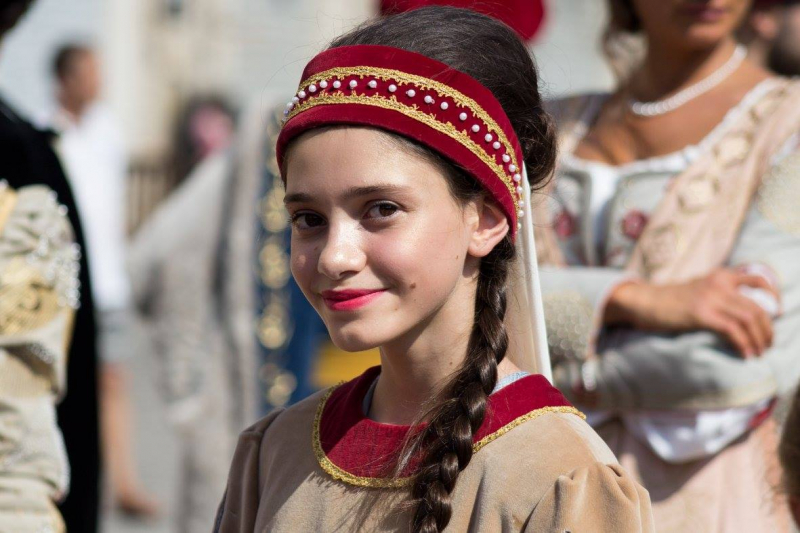
https://www.facebook.com/ 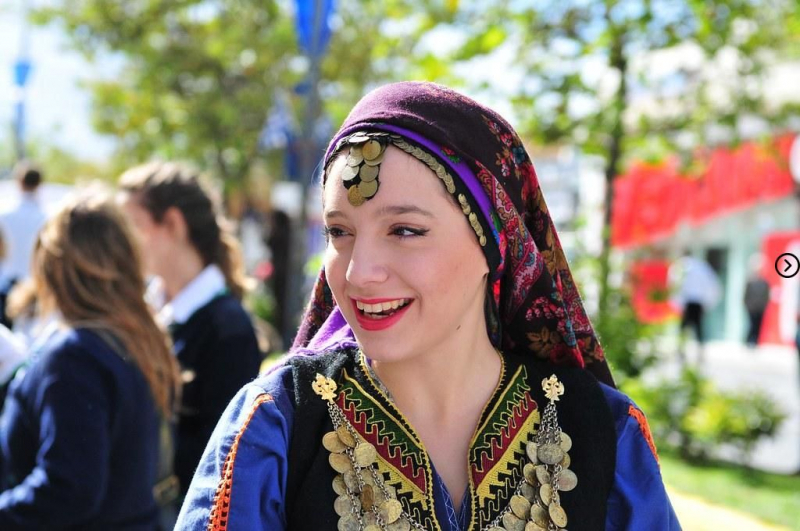
https://www.pinterest.com/ -
Officially, the Central Market in Riga is the biggest market in Europe. It is one of Latvia's most important twentieth-century buildings and was added to the UNESCO World Heritage Site list in 1998 along with Old Riga.
The five pavilions that make up the market's major structures were built by repurposing disused German Zeppelin hangars and fusing Neoclassicism and Art Deco elements. While CDs and home appliances are offered outdoors, you may buy fish, meat, dairy goods, bread, and vegetables inside the hangars. Although it is difficult to acquire high-end clothing or mementos, a trip to this enormous bazaar will offer you a sense of local culture unlike anything else.
There, price haggling is almost never acceptable, but you can always give it a shot. Additionally, before making a purchase, you can sample the goods. Therefore, this is the place to go if you want to try fresh Latvian goods. You shouldn't pass up the opportunity to try the local cheese and bread; you won't be disappointed!
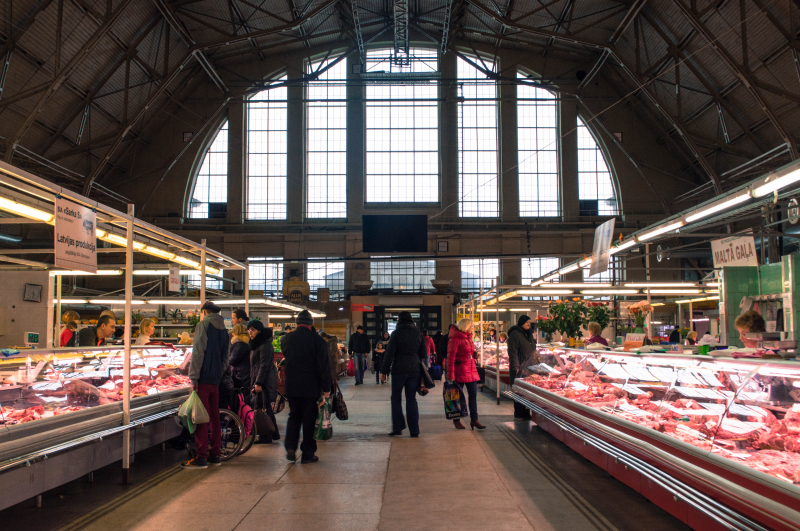
https://happytowander.com/ 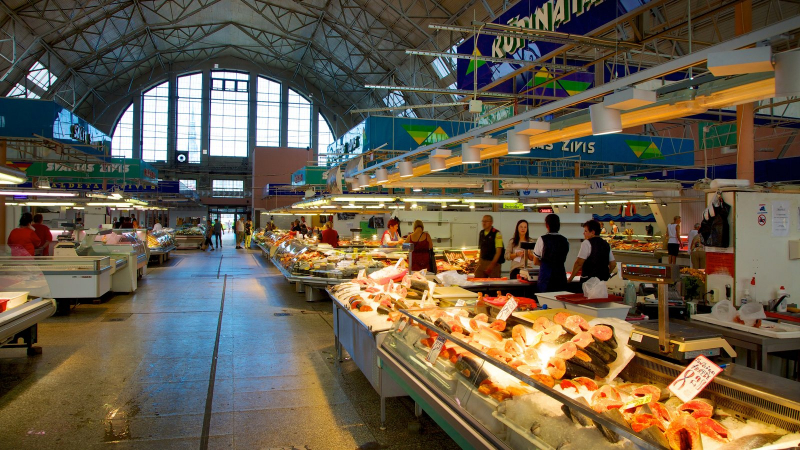
https://www.expedia.com/












